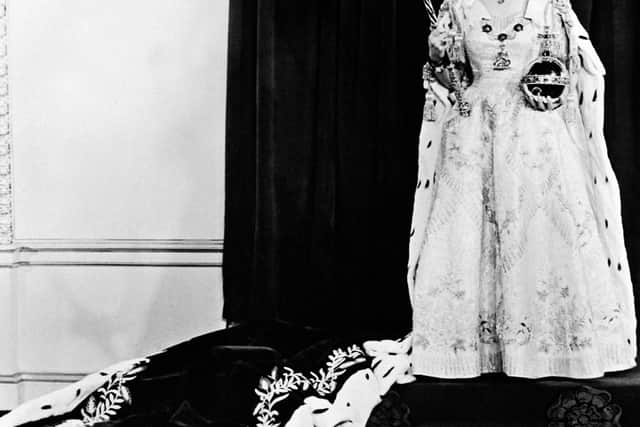A keen follower of fashion - the evolution of the Queen and her fashion through the decades
and live on Freeview channel 276
The Queen’s fashion represented Britishness, and she always had her own style, regardless of current trends.
Her Majesty passed away September 8 at the age of 96, and was last photographed in a tartan skirt when meeting the new PM, Liz Truss.
Advertisement
Hide AdAdvertisement
Hide Ad

Many branded the outfit as grandmotherly rather than regal, but she sported these patterns in the early years of her reign.


Before becoming queen, her wedding day was one of the moments where she was most in the public eye. She got married to Phillip Mountbatten November 20 1947.
People began to take more notice of her fashion from this day onwards.
The dress’ final design was approved less than three months before the big day, and took 350 people to make.
Advertisement
Hide AdAdvertisement
Hide AdNorman Hartnell’s creation was inspired by a Botticelli painting, and was made from duchess satin.
This material was difficult to acquire in post-war Britain, and at the time, there were clothing rations. The UK government gave the then-princess 200 extra ration coupons for the dress.
Even women from across the UK posted their clothing rations to Her Majesty to help make the dress. The princess had to post them back, but many think this showed how much the public admired her.
The dress was embellished with a whopping 10,000 seed-pearls, which would later become a staple for the royal’s iconic look.
Advertisement
Hide AdAdvertisement
Hide Ad

Throughout the 40s, her dresses had clean silhouettes, with a tighter waist, which were iconic of the period.


Her coronation dress, worn on June 2 1953, was again designed by Harnell and featured pearls. It was embellished with gold and silver thread to celebrate the occasion.
The Queen made one request - that the dress be embriodered with the national flowers from Britain and the Commonwealth.
Her robe was made by the Royal School of Needlework and took two months and 3,500 hours to complete. It had a symbolic meaning - the border featured ears and olive branches to represent peace and plenty.
Advertisement
Hide AdAdvertisement
Hide Ad

The following decade saw the royal’s style become more formal, with the addition of matching tailored jackets and brooches.


In the 60s, her clothing really came into its own. There was more playfulness - her dresses were a-line shaped, and she began embracing more patterned clothing. But, her hats and pearl necklesses still remained.


Her clothing in the 70s seemed to form the style for the rest of her life. She was often seen sporting structured hats and matching dresses and jackets.
From the 80s and beyond, the royal embraced more colour into her wardrobe. Queen Elizabeth II began wearing patterned and brightly coloured matching garments with hats.
